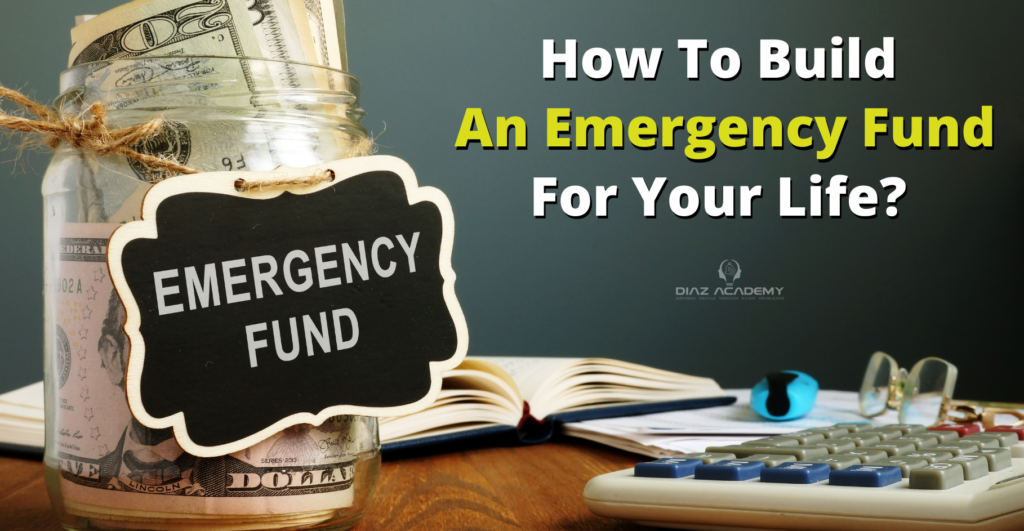If the ongoing coronavirus pandemic has taught us anything, it’s that an emergency can strike at any time and there’s nothing you can do about it except be prepared. While an emergency such as a natural disaster like earthquakes or floods, a health condition that prevents you from working, or an economic downturn resulting in job losses and salary cuts may be beyond your control, ensuring you have enough funds to get through it.
In times like these, how do you go about your life and meet your basic needs? The solution is to save up for an emergency fund that will allow you to get by it.
What is an emergency fund?
An emergency fund is a fund that should assist you in carrying on with your life and meeting your necessary expenses without resorting to last-minute unplanned loans, overusing your credit card, or selling and mortgaging your existing assets.
You may need to include obligatory expenses in your emergency fund, which are expenses that are absolutely necessary.
Ideally, obligatory expenses include food and medical treatment, rent, monthly loan payments, school fees, basic repairs and maintenance, insurance premiums, and anything else which is necessary.
How to save for an emergency fund?
Budgeting is the foundation of all financial planning. If you are just getting started with an emergency fund, you should take three major steps. Make a list of your monthly household expenses and divide them into obligatory and discretionary categories. Do it for a few months to get an average figure for your mandatory expenses. This exercise may also assist you in taking stock of your expenses and avoiding unnecessary spending. You never know how long an emergency will last, so saving for at least 3-6 months is ideal.
Assume that your household’s mandatory expenses total INR 50,000 per month. In that case, your emergency fund should have anywhere from INR 1.5 lakh to INR 3 lakh on hand at any given time. This may vary depending on the number of wage earners in your household, the number of dependents, and your expenses.
Personal finance experts advise single-income families to save more for an emergency fund, which should cover fixed expenses (rent, monthly payments) for at least a year and variable expenses for at least six months.
In the case of a two-earner family, the amount of savings per person may be lower.
How to build your emergency fund?
Set a deadline for establishing your fund: Setting a target date can help you reach your goal more quickly. Set a deadline for reaching your emergency fund goal based on your current financial situation. It could be three, six, or even a year. The earlier you begin, the easier it is to raise the necessary funds.
Take stock of existing assets: You may already have some assets that could be used to fund your emergency fund. It could be extra cash in your savings accounts, or some fixed deposits that aren’t tied to a specific goal, among other things. You can put some of that money into an emergency fund.
Make a separate account for the accumulation of funds: When you have extra money in your savings account, there is always the temptation to spend it. You could instead put this extra cash that isn’t related to any of your goals into a separate account set up to save for an emergency fund. You could simply do this by:
- Make a promise to yourself not to withdraw any money from this fund until you reach your goal.
- Set up an auto-debit feature on the account where you receive your paycheck to ensure you meet your monthly commitment to the emergency fund.
- Scheduling this transfer as close to your income credit date as possible so that you don’t have an opportunity to spend this amount on other discretionary expenditures.
Channelize any lump sum inflow into your emergency fund: Put aside any lump sum inflows, such as a bonus, income tax refunds, or gifts as credit, to meet your goal of establishing an emergency fund as soon as possible.
Where To Park Your Emergency Funds?
Cash: When it comes to dealing with emergencies, nothing beats liquid cash. However, given the safety concerns as well as the zero return on a substantial amount of available capital, it may not be the best option.
Liquid mutual funds: Liquid mutual funds are classified as debt mutual funds. These funds invest in short-term fixed-income securities such as Certificates of Deposit and Term Bills. Liquid funds are more liquid and offer a slightly higher return than fixed deposits. Another plus is the low minimum investment requirement. It’s important to understand that liquid mutual funds have an exit load if redeemed within seven days. It may take up to a day or two for the redemption amount to be deposited in your account.
Bottom Line
An emergency fund functions similarly to a parachute, saving you from a freefall in the event of a financial crisis. As a result, always give it the attention it deserves.It’s a good idea to revisit your emergency fund needs at least once a year, as things like starting a business, adding a new family member, or changing your lifestyle can all cause changes in your emergency fund needs.



